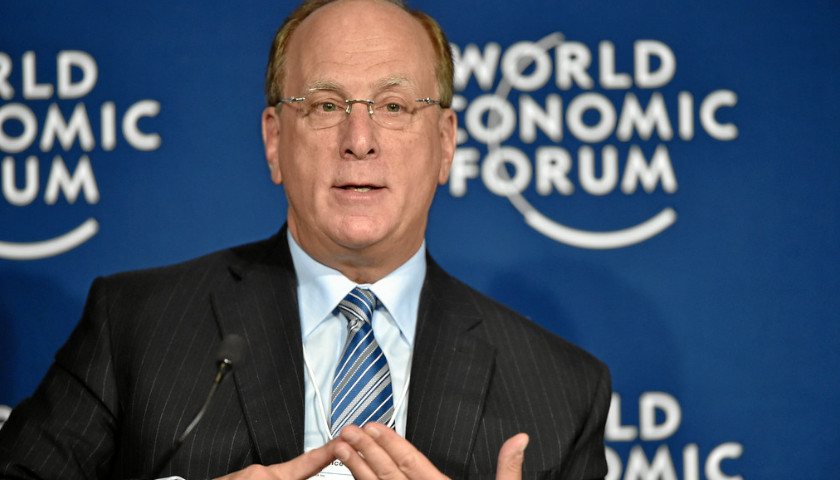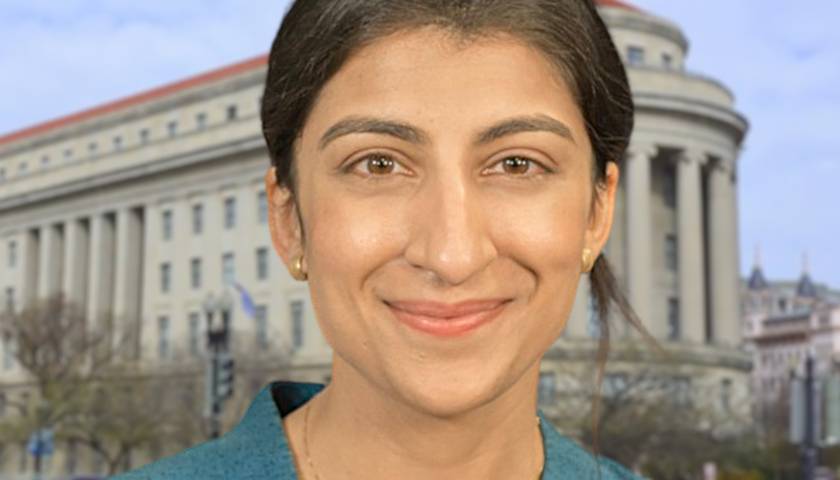by Rupert Darwall
Concern about catastrophic climate change has been the biggest factor driving ESG, yet the likelihood of climate change being catastrophic and the attainment of net zero are not open to debate or challenge by participants in financial markets. In the last of his four part review of Terrence Keeley’s Sustainable, Rupert Darwall argues that this undermines the function of financial markets as efficient, unsentimental allocators of people’s savings in a way that maximizes growth and economic well-being.
The importance of Sustainable is reflected in the authorship of its foreword, which is by BlackRock’s CEO, Larry Fink. Acknowledging the controversy surrounding sustainable investing and the lively debate that it has ignited, Fink writes: “I have always believed that the best way to work through big and important questions is through open and robust debate—challenging conventional ideas, finding new solutions.” Concern about climate change is the principal factor that drove the prodigious growth of ESG and sustainable investment. Although not theoretically synonymous, in practice they are—whenever there is a conflict between “E” and “S,” the “E” of climate change invariably nullifies the “S” of employee and wider stakeholder interests. Thus BlackRock requires the companies that it invests in to produce specific plans to align their activities with the global goal of net-zero greenhouse gas emissions by 2050, commonly but mistakenly referred to as alignment with the Paris climate agreement, which specifies achieving a balance between anthropogenic emissions from sources and removal from sinks “in the second half of this century,” a goal that is not binding in international law and that has not been legislated by the U.S. Congress.
Financiers—managers of other people’s money—decided to preempt the political process because of their belief that climate change is likely to cause a planetary catastrophe, in Keeley’s words, because they believe that “humanity is in a race to save itself from an unknown and unknowable climate disaster.” Yet, as he points out, every doomsday prediction to date has proved to be wrong. We know this because we’re still here, and, in material terms, humanity is better off than ever. A 2021 paper, “Apocalypse Now? Communicating Extreme Forecasts,” examined 71 predictions of climate-caused apocalypse dating from the first Earth Day in 1970 and found that by the end of 2020, 48 (61% of the total) of the predictions had expired—and failed. Across half a century of forecasts, little has changed; the apocalypse is always about 20 years out. One of the paper’s authors, Paul Fishbeck, professor of social and decision sciences at Carnegie Mellon University, commented: “If I observe many successive forecast failures, I may be unwilling to take future forecasts seriously.”
That heuristic with respect to serial forecast failures is all but universal in finance and investing, the glaring exception being climate change. (Keeley is rare for being a financier who rejects climate catastrophism and says so: “claiming humanity cannot survive if temperatures rise another two to four degrees Celsius is simply untrue.”) Page one of Sustainable recounts Keeley asking a prominent climate scientist at a large investment conference how much global temperature might have risen in 50 years’ time. As much as 4.5 degrees Celsius, an answer that Keeley describes as a “gut punch.” This implies an average warming of 0.9 degrees Celsius per decade—not 50% higher, not double, but a rate five times greater than the 0.18 degrees Celsius per decade observed increase over the past 35 years. How can this claim be remotely plausible?
Keeley compares the prospect of a 2–3-degree Celsius rise in global temperature since the Industrial Revolution to the last ice age, when global temperatures were about 6 degrees lower than today, the implication being that humans are 20%–30% of the way to a climatic transformation equivalent to prematurely plunging into the next ice age, but in the opposite direction. The last time global temperatures were as high as today, there was no ice covering Greenland or much of the Arctic and Antarctica, Keeley writes.
What happens to that ice over the next ten, twenty, fifty, or one hundred years is pretty much anyone’s guess. All we know for sure is that there will be much less of it unless the earth’s temperature drops meaningfully soon.
In its sixth assessment report, the Intergovernmental Panel on Climate Change (IPCC) stated that at a sustained warming level of 2–3 degrees Celsius, there is “limited evidence” that the Greenland and West Antarctic ice sheets would almost disappear “over multiple millennia.” As for the whole of Antarctica, a 2015 analysis of temperature data from 14 weather stations on the edge and the interior of the continent found a rise in temperature of 0.35 degrees Celsius since 1954 and 0.0 degrees Celsius since 1969.
To put in perspective fears about future climatic changes being of a similar scale as re-glaciation, the average amount of incoming solar radiation at the top of Earth’s atmosphere is 340 watts per square meter. In its fifth assessment report, the IPCC estimated the human-caused enhanced greenhouse effect at 2.83 watts per square meter—less than 1% of incoming energy from the sun. By contrast, Milanković cycles, which explain the succession of long-duration ice ages and briefer interglacials, cause variations of 100 watts per square meter in Northern Hemisphere summers above the 65th parallel, i.e., changes in energy two orders of magnitude or 35 times greater than that from the enhanced greenhouse effect.
This discussion of the relevance of Milanković cycles to human-caused climate change took place during the American Physical Society’s climate change workshop held on January 8, 2014, in Brooklyn. It must count as one of the rarest occurrences in the modern world—genuine debate between climate scientists, three supporters of the current consensus and three dissenters, on climate science—and demonstrates why debate is essential for improving the conversation on climate. By the same token, the workshop showed why supporters of the consensus are determined that such debates must not happen again.
The workshop was moderated by Steven Koonin, a theoretical physicist at New York University who had served as an undersecretary in the Department of Energy during President Obama’s first term. Later in the daylong workshop, Koonin observed that for climate models to reproduce past climate, greenhouse gas forcings had to be scaled down. When it came to making the centennial projections, these scaling factors were removed, resulting in a 25%–30% over-projection of warming by the end of the century. Why? “Well, we took exactly the same models that got the forcing wrong and which got sort of the projections wrong up to 2100,” responded William Collins, lead author of the chapter on climate modeling in the IPCC’s fifth assessment report. “Why do we even show centennial-scale-scale projections?” Koonin asked. “Well, I mean, it is part of the [IPCC] assessment process,” came the reply.
Based on this exchange, it’s fair to conclude that climate science is held to lower ethical standards than corporate America; if a company issuing securities to the public files a Form S-1 with the SEC containing financial projections that the filer knows to be misleading, it would run the risk of incurring civil and, in the case of its officers, criminal liability. Koonin’s dissatisfaction with the quality of climate science and the climate messages being projected to the public led him to write Unsettled, which Keeley references for pushing back against climate catastrophism and the spending of trillions of dollars on intermittent energy generation.
The quality most lacking in the climate conversation is sobriety. There are no prizes for dialing down climate alarm—on the contrary. Koonin’s views are unlikely to be acceptable at BlackRock, where Keeley says that a 2020 edict forbids portfolio managers from being climate-change deniers or contrarians on climate change. Keeley also notes that Sir John Templeton viewed investor sentiments as reliable counter-indicators: “By consistently leaning against them, a handful of legendary investors like Sir John himself amassed multibillion-dollar fortunes.” It is hard to reconcile these two positions, and the attempt to do so takes us into the nature and purpose of financial markets. Keeley’s guide is Robert Shiller, Nobel prizewinner, professor of economics and finance at Yale, and author of Finance and the Good Society. Finance has a specific responsibility for stewarding society’s assets efficiently and fairly while facilitating its most profound aspirations. Shiller also writes that a good society has “limited ability to make everyone’s dreams a reality—and finance is all about reality.” Insofar as the former view on facilitating aspirations is inconsistent with reality, it will be washed away like a sand castle by an incoming tide.
ESG is an attempt to change reality, not to understand it, which accounts for its intolerance of dissenting opinion. If, however, views like Koonin’s turn out to be anywhere close to being right, then ESG is promoting the largest misallocation of resources in history, an outcome with calamitous consequences for savers and the economy more generally; and is emboldening the enemies of the West, as can be seen in the current energy crisis and Vladimir Putin’s exploitation of net zero. That being the case, the day of ESG’s burial cannot come soon enough. Terrence Keeley’s Unsustainable brings forward that day.
– – –
Rupert Darwall is a senior fellow at RealClearFoundation, researching issues from international climate agreements to the integration of environmental, social, and governance (ESG) goals in corporate governance. He has also written extensively for publications on both sides of the Atlantic, including The Spectator, Wall Street Journal, National Review, and Daily Telegraph.
Photo “Larry Fink” by The World Economic Forum. CC BY-NC-SA 2.0.




